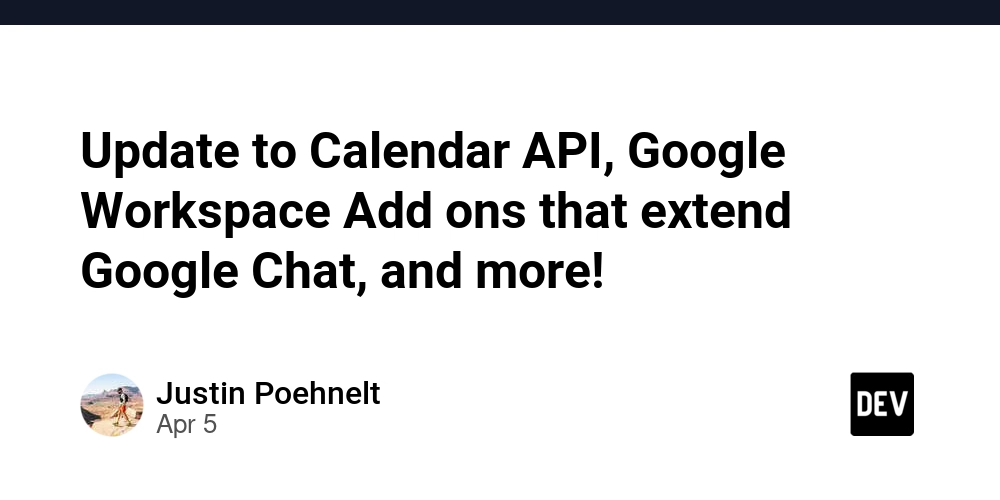Error Propagation with Custom Error Types
Error Propagation with Custom Error Types: The Definitive Guide Introduction Error handling is a fundamental aspect of programming that directly affects user experience, application stability, and maintainability. In JavaScript, error handling has evolved considerably since the inception of the language. With the introduction of custom error types, developers have the ability to propagate errors more meaningfully, providing greater insight into the issues their applications encounter. Historical Context JavaScript error handling dates back to the language's inception in the mid-1990s. Initially, errors were represented by a single Error object. However, as applications grew in complexity, developers began to grapple with the limitations of this approach. The lack of specificity meant that all errors were treated equally, making debugging arduous. With the advent of ES6 (introduced in 2015), JavaScript introduced the ability to create custom error types. With the rise of JavaScript frameworks, libraries, and the asynchronous programming paradigm (e.g., Promises and Async/Await), custom error types have become indispensable for building robust web applications. Custom Error Types Defining Custom Errors A custom error type allows you to create meaningful error brands in your JavaScript applications. The foundation of creating a custom error type is extending the built-in Error class. Basic Custom Error Implementation Here’s a simple implementation of a custom error type: class ValidationError extends Error { constructor(message) { super(message); this.name = 'ValidationError'; // Custom error name } } Throwing and Catching Custom Errors A significant aspect of error propagation is throwing and catching these custom errors during application execution. Here’s an example function that might validate user input and throw a ValidationError appropriately. function validateInput(input) { if (!input) { throw new ValidationError('Input cannot be empty.'); } return true; } try { validateInput(''); } catch (error) { if (error instanceof ValidationError) { console.error(`Validation error occurred: ${error.message}`); } else { console.error('An unexpected error occurred:', error); } } Complex Scenarios As applications grow, error propagation can become convoluted, especially in asynchronous code. Here’s an example demonstrating errors in asynchronous functions using Promises. Asynchronous Error Propagation Consider a scenario where you fetch data from an API, and the data must meet specific validation criteria. class FetchError extends Error { constructor(message) { super(message); this.name = 'FetchError'; } } async function fetchData(url) { const response = await fetch(url); if (!response.ok) { throw new FetchError(`Failed to fetch data: ${response.statusText}`); } const data = await response.json(); validateData(data); return data; } function validateData(data) { if (!data.valid) { throw new ValidationError('Data is not valid.'); } } fetchData('https://api.example.com/data') .then(data => console.log('Fetched data:', data)) .catch(error => { if (error instanceof FetchError) { console.error(`Fetch error: ${error.message}`); } else if (error instanceof ValidationError) { console.error(`Validation error: ${error.message}`); } else { console.error('Unknown error occurred:', error); } }); In this example, both fetch and validation errors are captured separately, enabling appropriate handling of each error type. Advanced Implementations Error Propagation in Call Chains In larger applications, multiple layers might handle errors. Propagating errors through call chains becomes essential. Here’s an implementation that shows how an error can be propagated through several functions. class DatabaseError extends Error { constructor(message) { super(message); this.name = 'DatabaseError'; } } function simulateDatabaseOperation() { throw new DatabaseError('Database connection failed'); } function performDatabaseOperation() { return simulateDatabaseOperation(); } function applicationLayer() { try { performDatabaseOperation(); } catch (error) { if (error instanceof DatabaseError) { console.error(`Database error caught: ${error.message}`); throw new Error('Higher-level error handling triggered.'); } throw error; // Rethrow non-database errors } } try { applicationLayer(); } catch (error) { console.error('Caught in main application:', error.message); } Handling Multiple Errors Concurrently With the introduction of Promise.all(), applications often need to handle multiple asynchronous operations concurrently. Suppose two separate validations need to occur: async function validateUserInput(in

Error Propagation with Custom Error Types: The Definitive Guide
Introduction
Error handling is a fundamental aspect of programming that directly affects user experience, application stability, and maintainability. In JavaScript, error handling has evolved considerably since the inception of the language. With the introduction of custom error types, developers have the ability to propagate errors more meaningfully, providing greater insight into the issues their applications encounter.
Historical Context
JavaScript error handling dates back to the language's inception in the mid-1990s. Initially, errors were represented by a single Error object. However, as applications grew in complexity, developers began to grapple with the limitations of this approach. The lack of specificity meant that all errors were treated equally, making debugging arduous.
With the advent of ES6 (introduced in 2015), JavaScript introduced the ability to create custom error types. With the rise of JavaScript frameworks, libraries, and the asynchronous programming paradigm (e.g., Promises and Async/Await), custom error types have become indispensable for building robust web applications.
Custom Error Types
Defining Custom Errors
A custom error type allows you to create meaningful error brands in your JavaScript applications. The foundation of creating a custom error type is extending the built-in Error class.
Basic Custom Error Implementation
Here’s a simple implementation of a custom error type:
class ValidationError extends Error {
constructor(message) {
super(message);
this.name = 'ValidationError'; // Custom error name
}
}
Throwing and Catching Custom Errors
A significant aspect of error propagation is throwing and catching these custom errors during application execution. Here’s an example function that might validate user input and throw a ValidationError appropriately.
function validateInput(input) {
if (!input) {
throw new ValidationError('Input cannot be empty.');
}
return true;
}
try {
validateInput('');
} catch (error) {
if (error instanceof ValidationError) {
console.error(`Validation error occurred: ${error.message}`);
} else {
console.error('An unexpected error occurred:', error);
}
}
Complex Scenarios
As applications grow, error propagation can become convoluted, especially in asynchronous code. Here’s an example demonstrating errors in asynchronous functions using Promises.
Asynchronous Error Propagation
Consider a scenario where you fetch data from an API, and the data must meet specific validation criteria.
class FetchError extends Error {
constructor(message) {
super(message);
this.name = 'FetchError';
}
}
async function fetchData(url) {
const response = await fetch(url);
if (!response.ok) {
throw new FetchError(`Failed to fetch data: ${response.statusText}`);
}
const data = await response.json();
validateData(data);
return data;
}
function validateData(data) {
if (!data.valid) {
throw new ValidationError('Data is not valid.');
}
}
fetchData('https://api.example.com/data')
.then(data => console.log('Fetched data:', data))
.catch(error => {
if (error instanceof FetchError) {
console.error(`Fetch error: ${error.message}`);
} else if (error instanceof ValidationError) {
console.error(`Validation error: ${error.message}`);
} else {
console.error('Unknown error occurred:', error);
}
});
In this example, both fetch and validation errors are captured separately, enabling appropriate handling of each error type.
Advanced Implementations
Error Propagation in Call Chains
In larger applications, multiple layers might handle errors. Propagating errors through call chains becomes essential. Here’s an implementation that shows how an error can be propagated through several functions.
class DatabaseError extends Error {
constructor(message) {
super(message);
this.name = 'DatabaseError';
}
}
function simulateDatabaseOperation() {
throw new DatabaseError('Database connection failed');
}
function performDatabaseOperation() {
return simulateDatabaseOperation();
}
function applicationLayer() {
try {
performDatabaseOperation();
} catch (error) {
if (error instanceof DatabaseError) {
console.error(`Database error caught: ${error.message}`);
throw new Error('Higher-level error handling triggered.');
}
throw error; // Rethrow non-database errors
}
}
try {
applicationLayer();
} catch (error) {
console.error('Caught in main application:', error.message);
}
Handling Multiple Errors Concurrently
With the introduction of Promise.all(), applications often need to handle multiple asynchronous operations concurrently. Suppose two separate validations need to occur:
async function validateUserInput(input) {
if (input.username.length < 3) {
throw new ValidationError('Username too short.');
}
}
async function validateUserAge(input) {
if (input.age < 18) {
throw new ValidationError('Must be at least 18 years old.');
}
}
async function validateUserData(input) {
return Promise.all([
validateUserInput(input),
validateUserAge(input)
]).catch(error => {
if (error instanceof ValidationError) {
console.error(`Validation error: ${error.message}`);
}
throw error; // Further propagation
});
}
validateUserData({ username: 'ab', age: 19 })
.catch(error => console.error('Error during user data validation:', error.message));
Comparative Analysis with Other Approaches
Standard Error Handling vs. Custom Types
Using standard error handling (i.e., without custom types) leads to ambiguous error management. Custom types allow for:
- Clarity: Understanding the type of error without inspecting the message.
- Specific handling: Catching specific errors based on their type.
- Extensibility: Introducing new error types for specific domains or modules has a low overhead.
Alternative Libraries
-
express-async-errors: Automates error handling in Express applications. -
http-errors: Simplifies creating HTTP errors with proper status codes.
While these libraries abstract some complexities, they shift the responsibility of custom error types away from the developer.
Real-World Use Cases
Microservices Architecture: Each microservice can define and throw tailored errors that other services can consume. For example, an inventory service might throw
InventoryErrorif a product isn't available.API Development: RESTful APIs benefit from well-defined error types, making it clear to the consumers of the API what went wrong (e.g.,
UnauthorizedError,NotFoundError).
Performance Considerations
Memory Overhead
Creating numerous custom error types can lead to increased memory consumption. Each instantiation comes with its own stack trace – ensure you are only creating them when necessary.
Error Handling Overhead
Frequent error checks slow down the application, especially in tight loops or hot paths. Limit the frequency and ensure critical paths are optimized.
Advanced Debugging Techniques
Stack Traces: Utilize the full capability of error stack traces to trace back to the origin of complex error types.
Logging Libraries: Implement libraries like
winstonorbunyanfor structured logging of errors which can help in capturing detailed context about errors in production.Error Monitoring Services: Use services like Sentry or Rollbar for real-time error tracking, aggregation, and monitoring.
Conclusion
Custom error types enhance error propagation in JavaScript applications, leading to improved clarity, maintainability, and user experience. Through the use of custom types, developers can create robust systems that handle a variety of errors gracefully.
By understanding the nuances of error propagation, considering practical implementations, and being aware of potential pitfalls, senior developers can elevate their error handling strategies, making their applications more resilient in the face of adverse conditions.
References
This article aims to be a comprehensive resource for senior developers looking to leverage custom error types for better error handling in their JavaScript applications. The strategies discussed here are not just theoretical; they reflect practical challenges and solutions encountered in the field, making this an essential guide for building resilient software in JavaScript.






































































![Rapidus in Talks With Apple as It Accelerates Toward 2nm Chip Production [Report]](https://www.iclarified.com/images/news/96937/96937/96937-640.jpg)









































































































.webp?#)


_Christophe_Coat_Alamy.jpg?#)










































































![[The AI Show Episode 142]: ChatGPT’s New Image Generator, Studio Ghibli Craze and Backlash, Gemini 2.5, OpenAI Academy, 4o Updates, Vibe Marketing & xAI Acquires X](https://www.marketingaiinstitute.com/hubfs/ep%20142%20cover.png)
































































































































![From drop-out to software architect with Jason Lengstorf [Podcast #167]](https://cdn.hashnode.com/res/hashnode/image/upload/v1743796461357/f3d19cd7-e6f5-4d7c-8bfc-eb974bc8da68.png?#)
































-Nintendo-Switch-2-–-Overview-trailer-00-00-10.png?width=1920&height=1920&fit=bounds&quality=80&format=jpg&auto=webp#)





.jpg?#)


.png?#)






















































